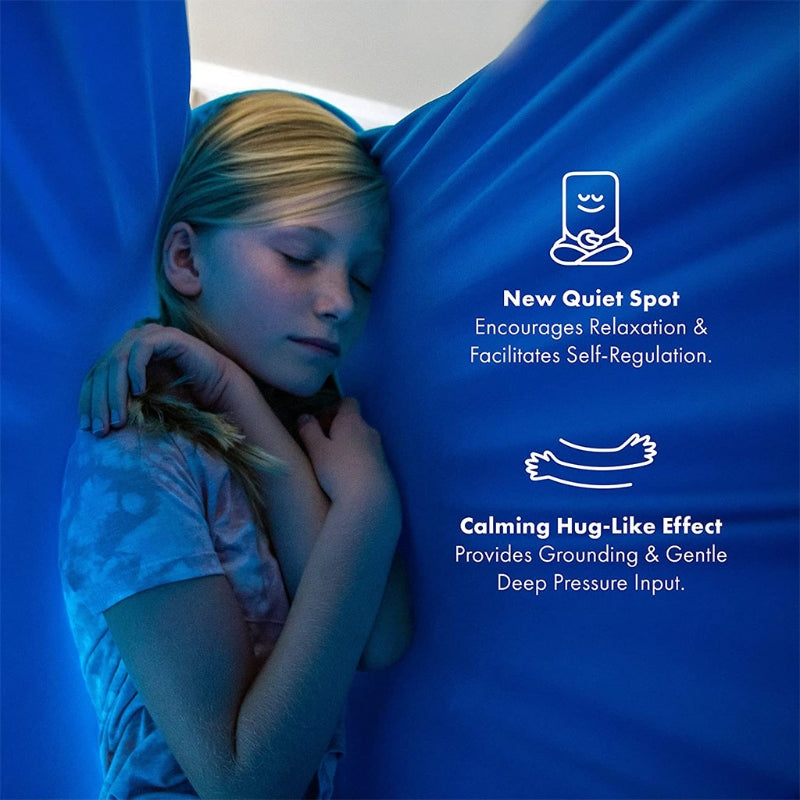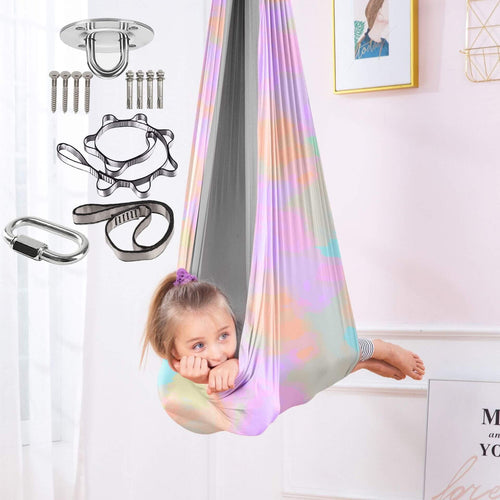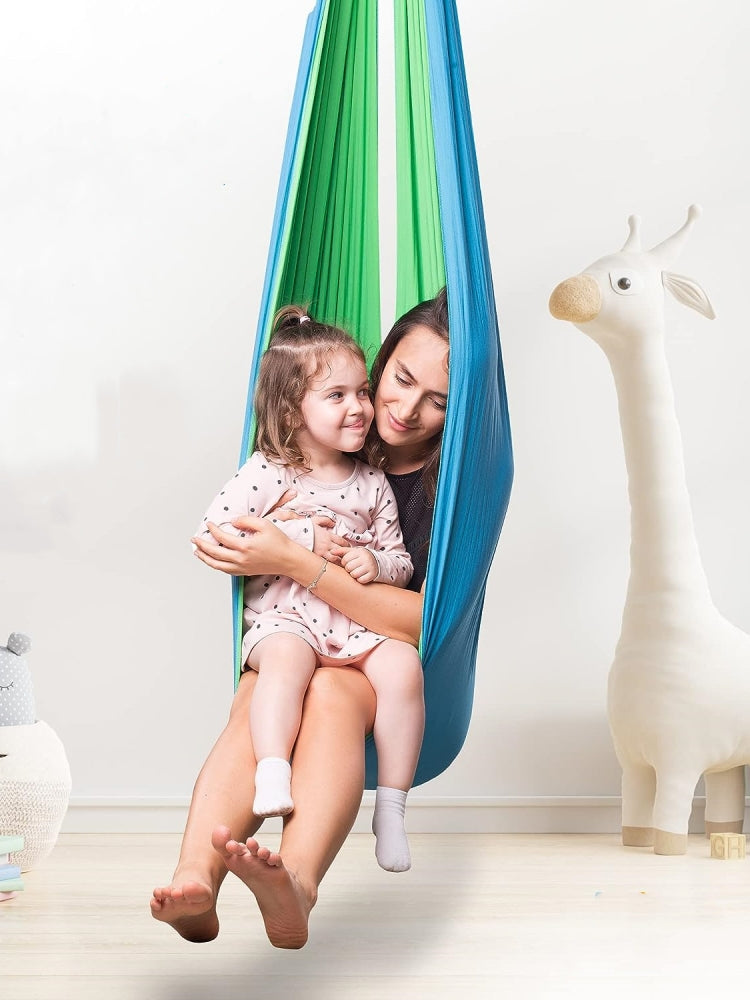Hey there! Today we're going to dive into an interesting comparison that might be of great interest to many, especially those who are concerned about therapeutic activities: the difference in therapeutic effects between traditional swings and sensory swings.
Traditional Swings: The Familiar Fun
We all know and love traditional swings. They've been a staple in playgrounds for ages. You know the ones - those simple seats attached to chains that you pump your legs on to get going. For most of us, they bring back memories of carefree days at the park, laughing with friends and feeling the wind in our hair.
Therapeutically speaking, traditional swings do offer some benefits. The rhythmic motion of swinging back and forth can have a calming effect on the body. It helps with the development of balance and coordination. When a child (or an adult for that matter) is on a traditional swing, they have to engage their core muscles to maintain their position and control the movement. This is great for building muscle strength in a fun way.
However, traditional swings are a bit one-size-fits-all. They don't really take into account individual differences in sensory needs. For example, some people might find the speed and intensity of a traditional swing a bit too much or not enough, and there's not much room for adjustment.
Sensory Swings: A New World of Therapy
Now, let's turn our attention to sensory swings. These are a whole different ballgame! Sensory swings come in various shapes and sizes, from pod-like enclosures to netting hammocks. They are designed to provide a more customized sensory experience.
One of the biggest advantages of sensory swings is their ability to target specific sensory needs. For kids with sensory processing disorders, the gentle rocking or spinning motion of a sensory swing can be incredibly soothing. It can help regulate their nervous system, reducing feelings of anxiety and overstimulation. The enclosed or semi-enclosed design of many sensory swings also provides a sense of security, which is crucial for those who might feel overwhelmed in an open environment like a regular playground.
Moreover, sensory swings can be adjusted in terms of speed, height, and even the type of movement. This means that whether you need a slow, gentle sway or a more vigorous spin, you can customize it to fit your exact needs. It's like having a personal therapy session right in your own backyard or in a therapy center.
Expert Interview: What the OT Therapists Say
To really understand the difference in therapeutic effects between these two types of swings, I had the chance to chat with some amazing Occupational Therapy (OT) therapists. And let me tell you, their insights were eye-opening!
One OT therapist, let's call her Sarah, told me that "Traditional swings are great for general motor development and can be a fun addition to any playground. But when it comes to addressing specific sensory challenges, they often fall short. Sensory swings, on the other hand, are like a toolkit for therapists. We can use them to target different sensory systems and help our clients achieve better regulation and engagement."
Another therapist, Mark, added, "I've seen kids who were initially resistant to any form of therapy completely open up when they got on a sensory swing. The combination of the right movement, the enclosed space, and the ability to control the experience themselves made all the difference. It's not just about physical movement; it's about creating a safe and engaging sensory environment."
These experts really emphasized the importance of having options when it comes to therapeutic activities. And it's clear that sensory swings offer a level of customization and targeted therapy that traditional swings simply can't match.
Product Recommendation: SensoryHarbor's Clinical Cooperation Cases
Now that we've talked about the differences and heard from the experts, let's take a look at a company that's really making a mark in the world of sensory swings: SensoryHarbor.
SensoryHarbor has been involved in some amazing clinical cooperation cases. For example, they worked with a local therapy center that specializes in treating kids with autism spectrum disorder. The therapists at the center were looking for ways to improve the engagement and progress of their young clients during therapy sessions.
They introduced SensoryHarbor's sensory swings into their treatment plans. And the results were remarkable! The kids who were previously hesitant or easily distracted during therapy became much more focused and willing to participate. The sensory swings provided that perfect combination of comfort and stimulation that these kids needed to really get involved in the therapeutic activities.
In another case, SensoryHarbor partnered with a school's special education department. The teachers there were struggling to find activities that would help students with sensory processing difficulties stay calm and attentive in the classroom. With the addition of SensoryHarbor's sensory swings in a dedicated sensory room at the school, the students' behavior and academic performance improved significantly.
The beauty of SensoryHarbor's products is not just in their quality and design but also in their ability to adapt to different therapeutic settings. Whether it's a small therapy practice or a large school environment, their sensory swings seem to fit right in and make a real difference.
In conclusion, while traditional swings have their place in our hearts and in the world of general play and some basic motor development, sensory swings are emerging as a powerful tool in the realm of therapy. They offer a more personalized and targeted approach to addressing sensory needs, and as we've seen from the expert opinions and the success stories of SensoryHarbor's clinical cooperation cases, they can have a profound impact on the well-being and progress of those who need that extra bit of sensory support. So, if you or someone you know could benefit from a more customized sensory experience, it might be worth considering checking out the world of sensory swings!







